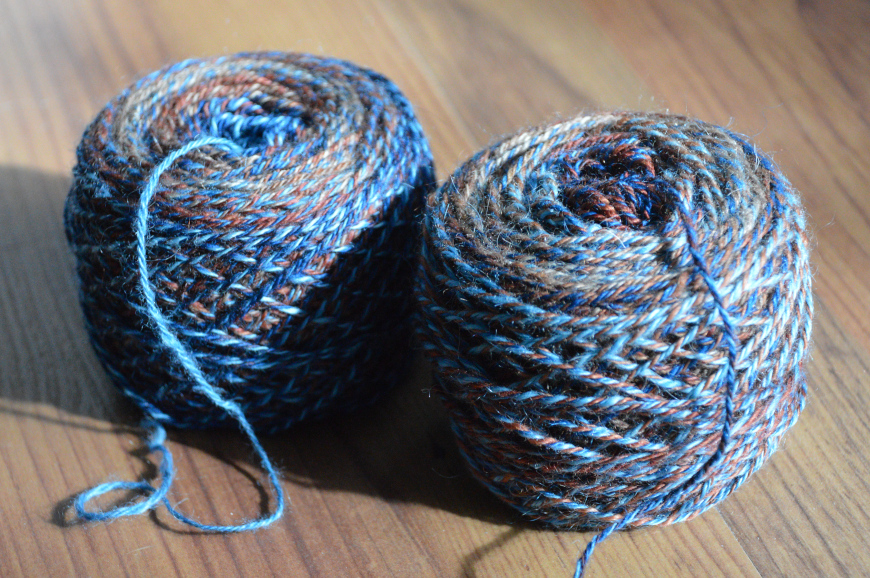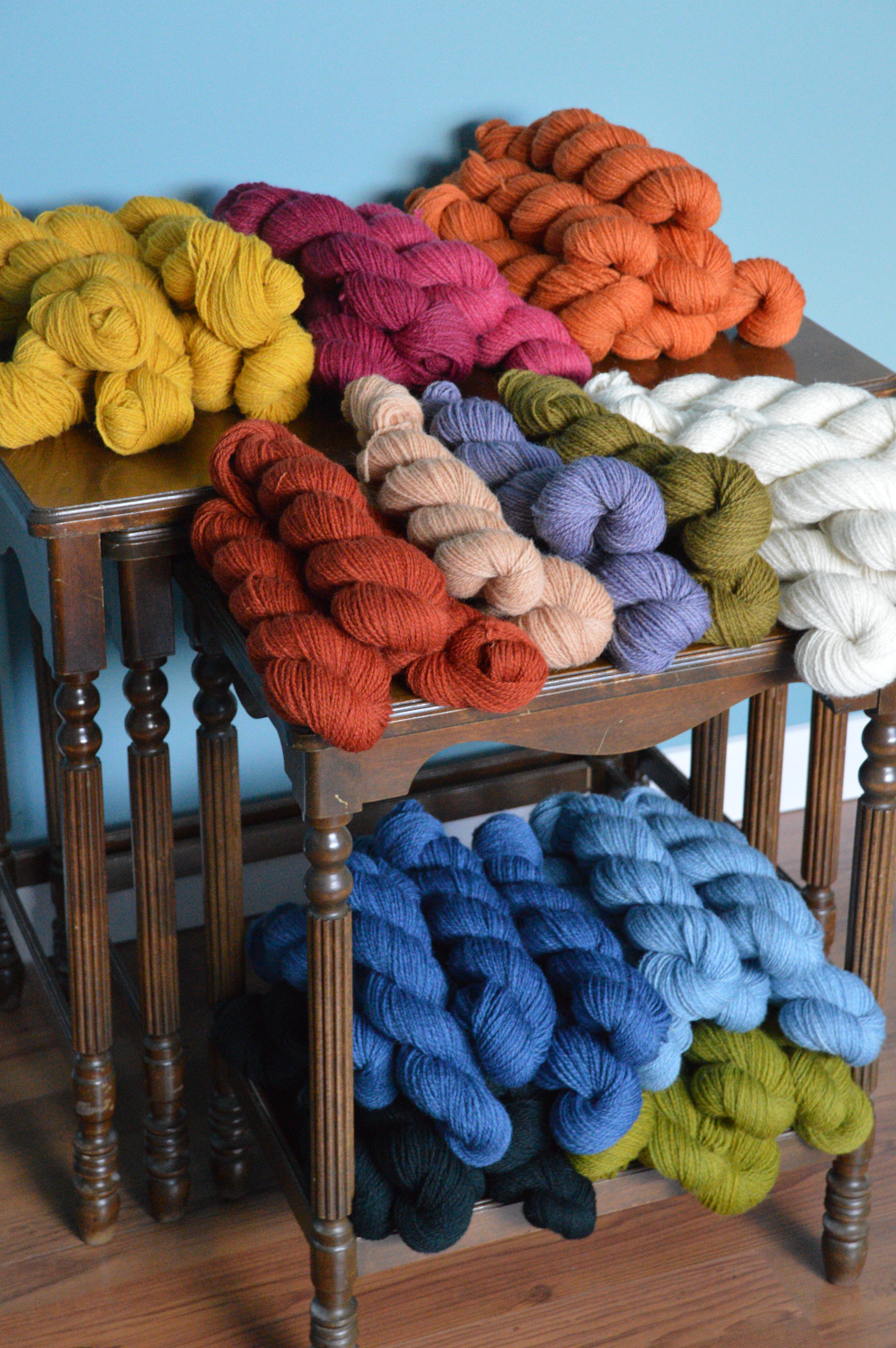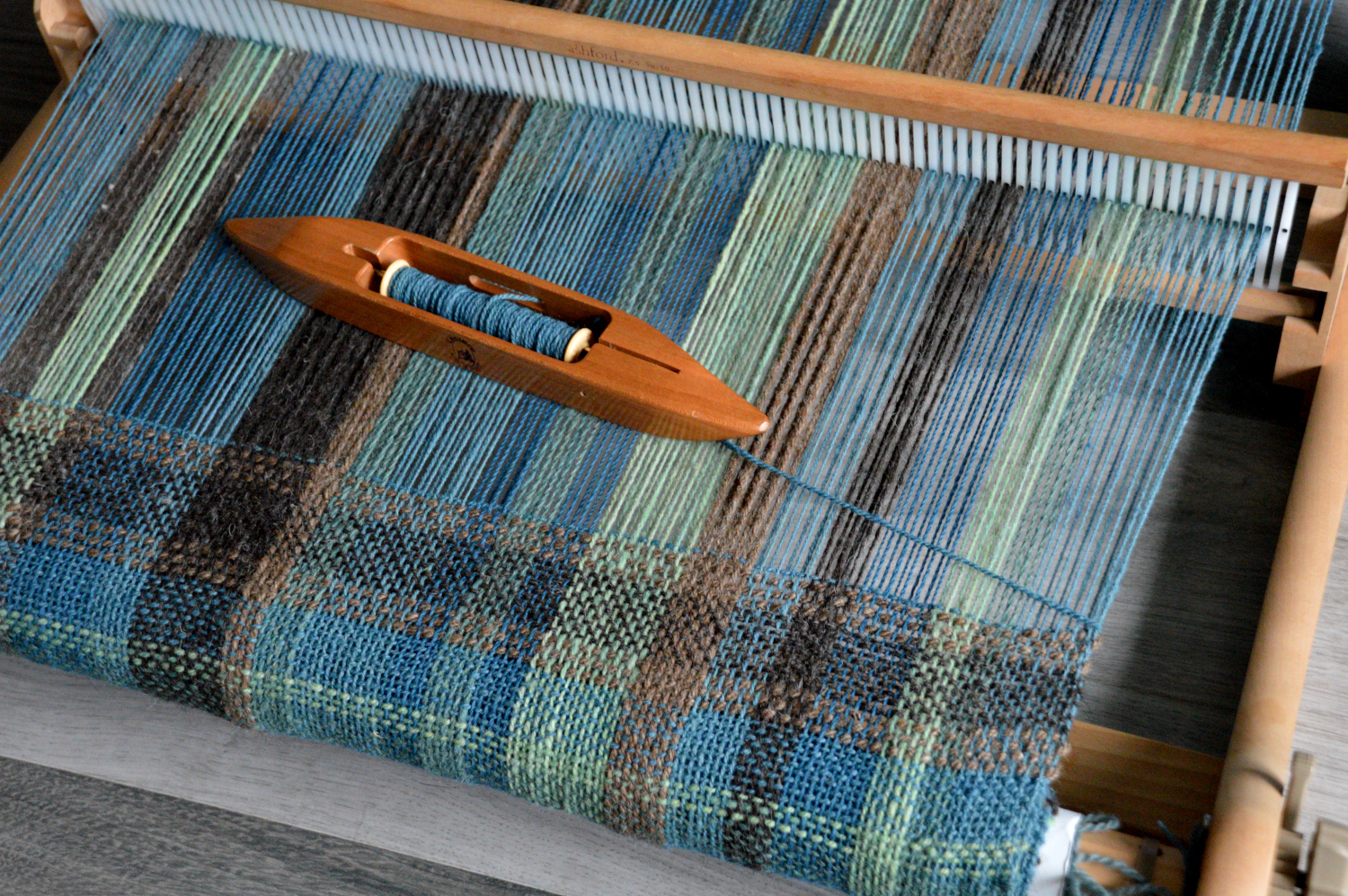June has been a particularly busy month for me in terms of making stuff. It’s been a bit of a weird month for me for various reasons, but when that I happens I often turn to doing things. Some people clean, or walk, or watch TV to clear their minds. I turn to textiles and making things with my hands to clear my mind and centre myself.
Without further ado, shall we?
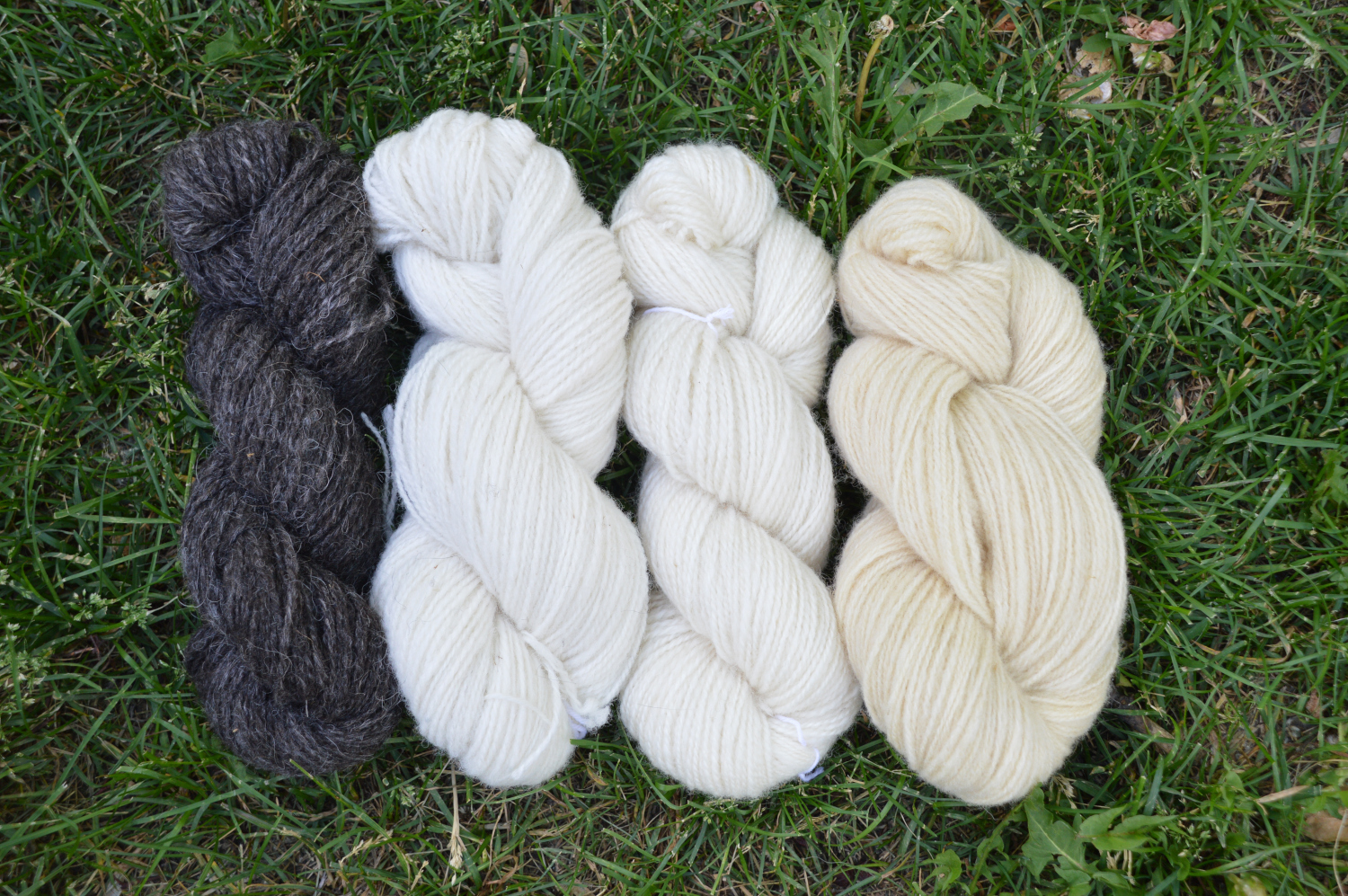
Spinning
My Long Way Homestead Breed of the Month is coming along nicely. I started spinning the Border Cheviot right after the Icelandic, and then just kind of kept going. I decided to keep with the long draw theme, all three subsequent spins were much more even than the Icelandic was last month. I’m not sure if it was me getting more used to the motion (not that I haven’t done long draw before, but not for a long time), or if the following wools lent themselves a bit better to long draw. Maybe a bit of both?
The next three wools I spun (in order) were Border Cheviot, Wensleydale, and Tunis. I spin a lot of North Country Cheviot, and I was interested in seeing if I could tell the difference. Honestly, if you gave me a blind test of both and asked me to point out which was which, I don’t think I could. They both feel toothy and bouncy, and the texture of both is incredibly similar, if not exactly the same.
I did not put a lot of twist into this skein (or any of them, honestly). In fact, a few sections when I wound off to check my twist, the singles broke apart. I’m still getting the hang of getting twist with long draw. Having said that, I was pleased when none of my skein broke apart during the plying stage, since unlike the Icelandic from last month, I can’t full it to add strength.
I spun the singles around 18 WPI, which normally would mean you’d expect a finished yarn of around 12 WPI, but not this one! Along with the long draw, I put in just enough twist to twist lock the fibres; Cheviot benefits from a bit of higher twist, but I wanted to go for something super light and airy, and I got it. The finished yarn ended up being 8-9 WPI, putting it squarely in the heavy worsted/aran camp.
In the unfinished singles I put in about 3-4 TPI, and guessing that a lot of this would even out, I actually overspun the ply slightly to about 6 TPI. For a finishing I soaked and thwacked, and lo and behold – it ended up a balanced 4 TPI. I don’t normally go for a balanced yarn, I think it’s a bit of a myth that you always definitely need a balanced yarn. Having said that, sometimes it does just work out that way.
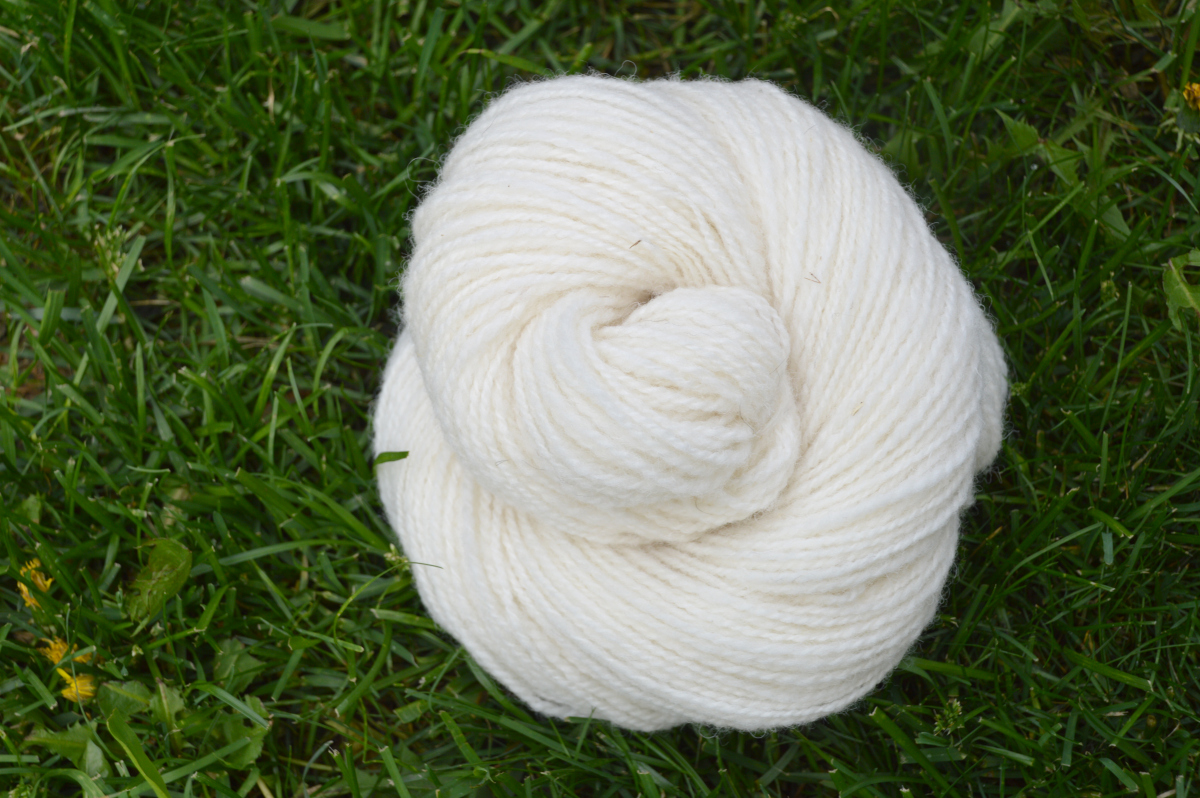
Border Cheviot stats:
- Finished yarn weight: Aran (approx 8-9 WPI)
Finished yardage: 215 yds
Skein weight: 106g
Finished grist: 932 ypp
Unfinished singles WPI: 18
Unfinished singles TPI: 3-4
Finished yarn TPI:
Spun: long backward (mostly unsupported)
Finishing: soaked & thwacked
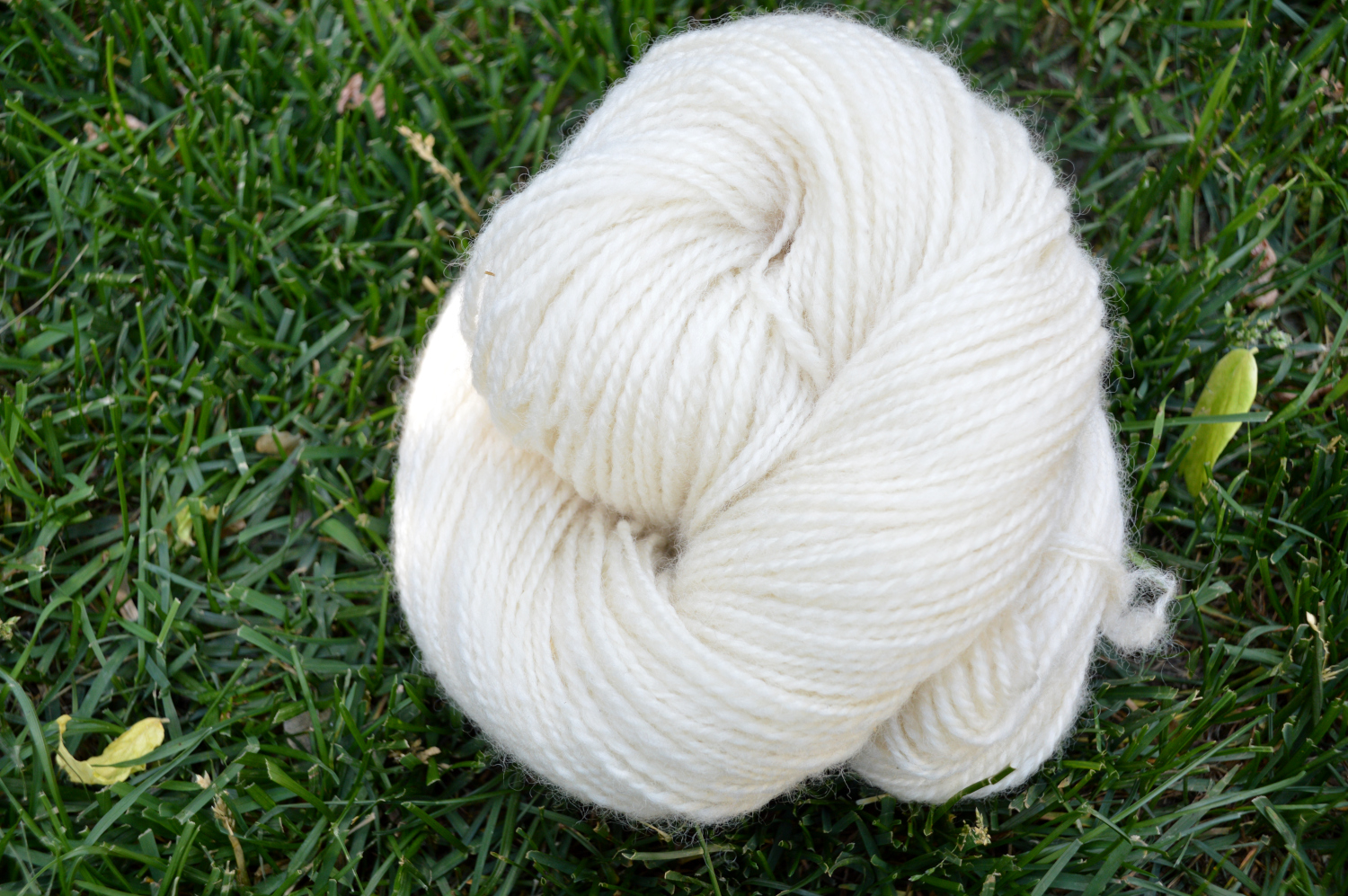
Next up I spun the Wensleydale from Long Way Homestead. I felt like I was really starting to get the hang of the long draw thing; the spin was quick and easy, and this Wensleydale in particular was beautifully prepped. Wensleydale was a new to me fibre, and it definitely lived up to its smooth and silky reputation. Next to the Cheviot it also has a slightly creamy overcast too it, which is really lovely.
I wanted to go thin for this one, so I spun the singles around 20 WPI, putting in 2.5 twists per in into the singles – since it’s such a long-stapled fibre, I wanted to back right off as much as I could. I’m also pleased to say that every time I wound back to check my twist, no drifting apart singles!
For the ply I overplied slightly – putting in about 4-5 TPI, and for finishing all I did was a soak and snap. Lo and behold, once the skein was dry, perfectly balanced again.
I do also want to point out that I spun this so perfectly at the end of the plying, I had one empty bobbin, and one bobbin with only about 8″ of singles left over. I have never gotten that close in all my life, so I had to take a photo for posterity.
Wensleydale Stats:
- Finished yarn weight: DK
Finished yardage: 212 yds
Skein weight: 104g
Finished grist: 932 ypp
Unfinished singles WPI: 20
Unfinished singles TPI: 2.5
Finished yarn TPI: 2.5
Spun: long backward (mostly unsupported)
Finishing: soaked & snapped
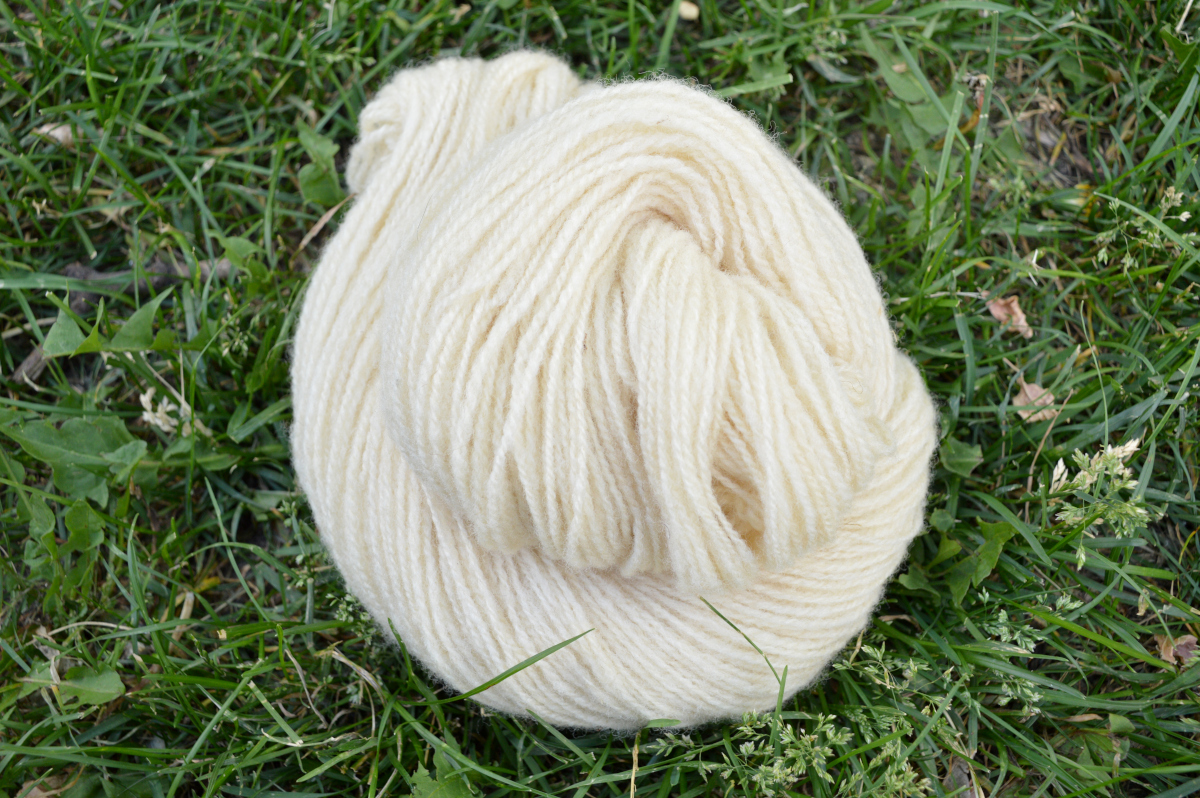
Final skein this month was the Tunis. I was feeling pretty comfortable at this point with long draw, so I wanted to go as thin as possible. I put my wheel on the fasted whorl (14:1), and started spinning. I ended up with a WPI of 24 for the unfinished singles, which is pretty good. Having said that, I was spinning so finely, I definitely had some weak spots and ended up with a few breaks all clustered together in one section, which I found out when plying.
Despite my 24 WPI, which one would expect to give me about 18 WPI for the ply, instead I got… between 11-12 WPI. I’m really still getting the hang of how much long draw fluffs up when done – even compared to a semi-woollen spin like short continuous backward (while letting the twist in the drafting zone). I’m going to have to treadle really fast and slow my hands down to get the amount of twist in I need to my upcoming Cheviot spin, while still keeping it finer.
Tunis Stats:
- Finished yarn weight: Heavy Sport/Light DK
Finished yardage: 278
Skein weight: 94g
Finished grist: 1341
Unfinished singles WPI: 4
Unfinished singles TPI: 4
Finished yarn TPI:4
Spun: long backward (mostly unsupported)
Finishing: soaked & snapped
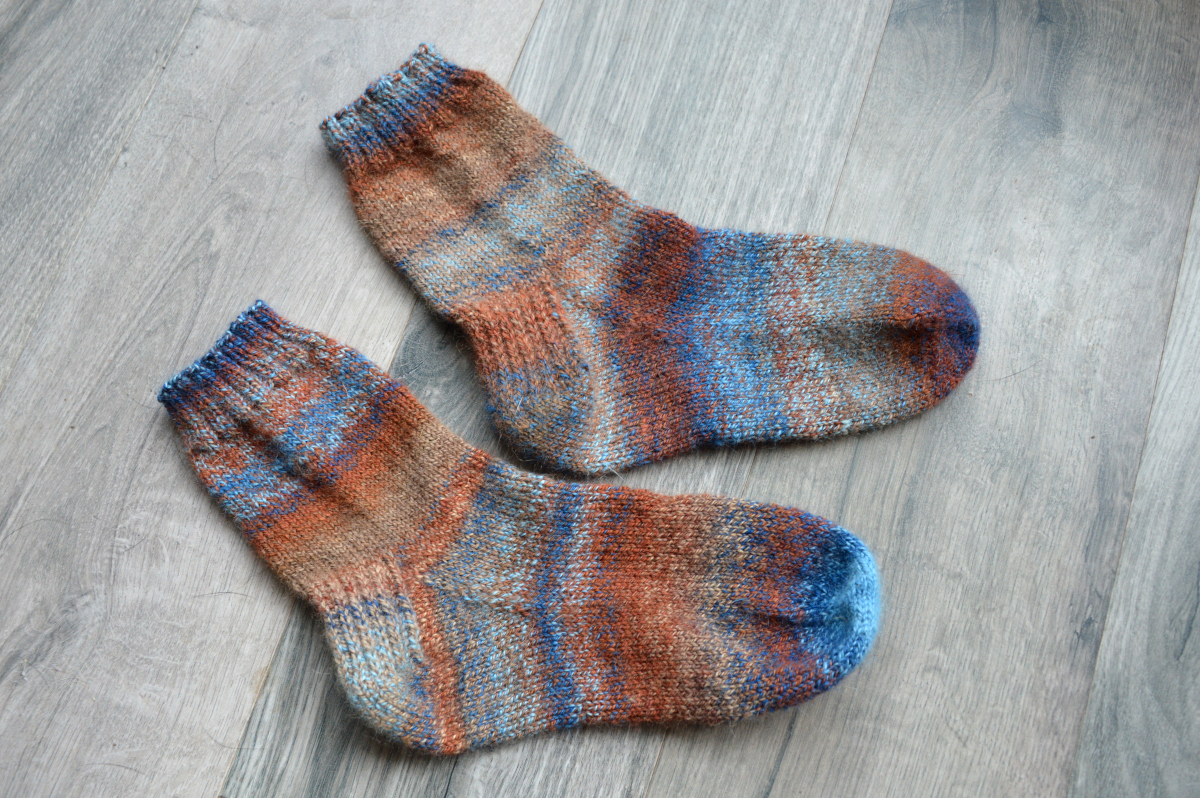
Pesuta Sock Spin
This is the spin I’ve been teasing for months, and I’ve been given the okay to finally divulge. It’s both a spin and a hand spun knit, so not knowing which category to put it in, it gets its own.
My friend, Katrina of Crafty Jaks Boutique, asked me to test some of this fibre out for her earlier in the year; first in the spinning and then for the wearability of a sock yarn once I had spun it. How can I say no to that? This is a BFL/mohair blend – both fibres that lend themselves well to strength. I spun this as a 3 ply fractal, which is how this beautiful patterning in the finished socks was achieved. It is absolutely my favourite way to spin and knit for socks, unless I plan on doing something specific with colourwork or cables.
Spinning for socks is a level-up for a lot of spinners; I know from the communities I’m in that’s one of the things people rejoice the most at when they get that perfect yarn to knit their first pair of hand spun socks (I know I certainly did many years ago!). With that in mind, I’m going to actually make this a longer post/tutorial. I’ll talk about the fibre choices you can make, along with how to think about some of the decisions you’ll make when you get to spinning that first pair.
Having said that, this pair is such a dream. The resulting yarn was wonderful, and while I was slightly worried because BFL is so drapey, the socks hold their shape wonderfully, and so far have stood up to the abuse I put my socks through.
Tour de Fleece
Holy crap, it’s Tour de Fleece, right?! Normally I’d be spinning a fleece that I had picked up raw and washed and prepped. This summer, I was somewhat inspired by my Border Cheviot spin, and decided to go with a sweater spin with my North Country Cheviot roving I had done up at Rosebud River Fibre Mill. I looked at my Long Way Homestead spin as one big sample, so I’m going for a sport or DK weight, and I’m spinning more finely and on a faster whorl than the Border Cheviot.
I’m going to talk a bit more about this in another post, or July’s Fibre Notes, since TdF just started, and runs to July 18th – I’ll have a lot more to say then.
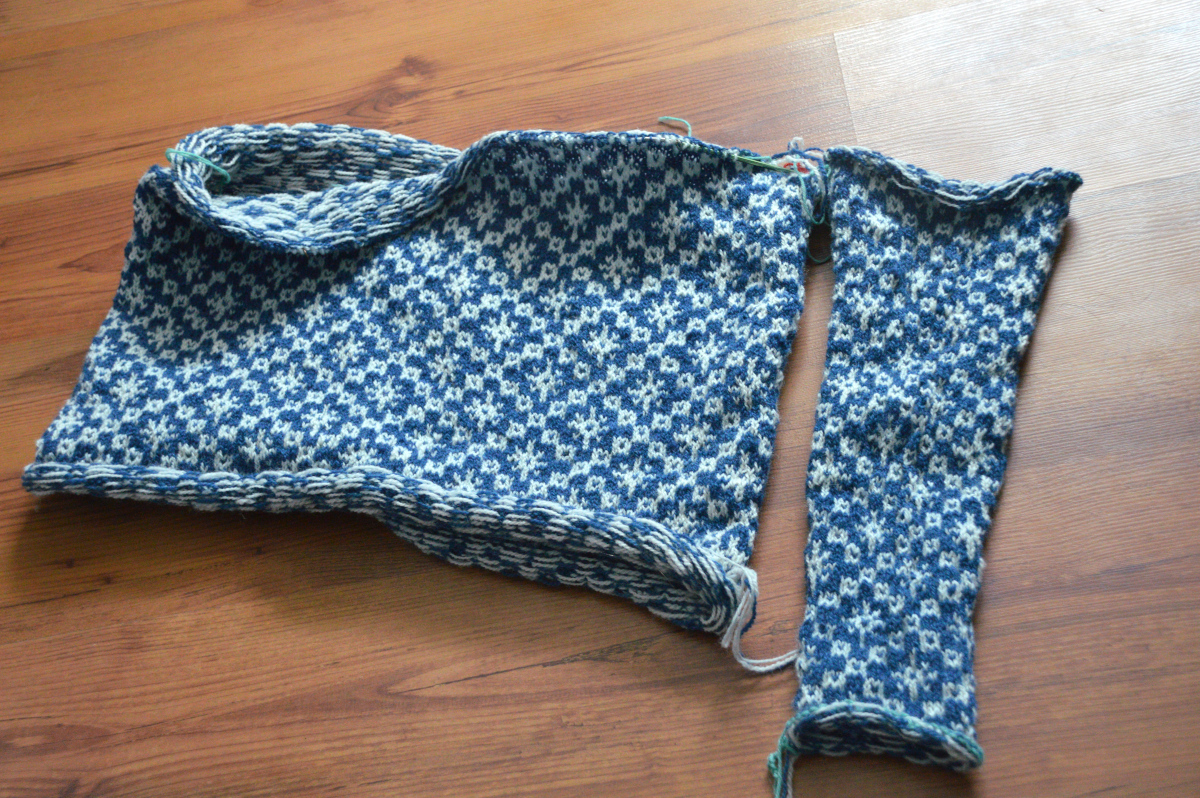
Knitting
I’m still working away on my The Oa I’m knitting with my 100% Alberta Cheviot Sport yarn.
I got a short circular needle to try my hand at using one of those with the sleeves for my The Oa by Kate Davies. Result: I didn’t like it. With colourwork and the inability to use my pinkies (which apparently I use extensively while knitting?!), it took me way too long to finish a single repeat. So I moved back to DPNs, and am still humming away on my sleeves.
I am not racing along on this one. I’ve been doing quite a bit of spinning, dyeing, and sewing lately, but I do pick it up and work a repeat or two as the mood strikes. Of course my friend, Anna, who was knitting this along with me is all done because she’s the fastest knitter on the planet. Her The Oa is definitely inspiring, and it’s nice having somebody to ask questions of that’s already completed the pattern.
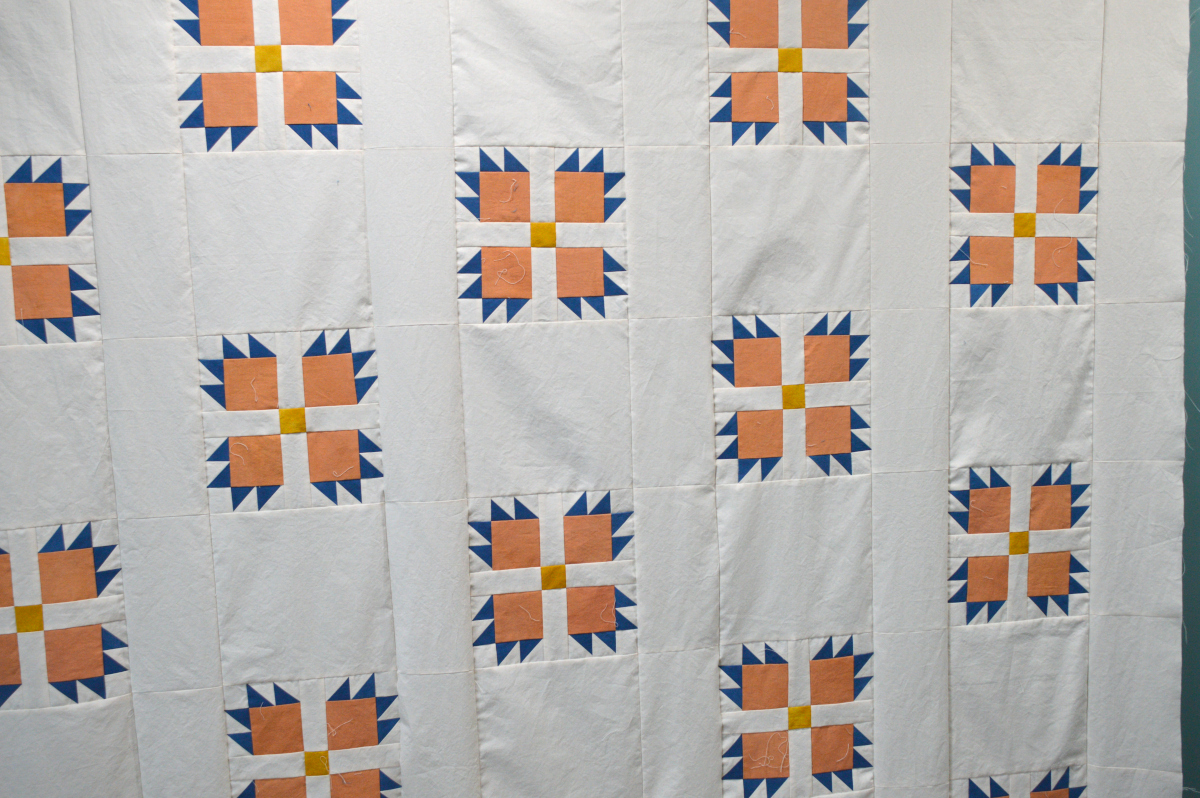
Natural Dyeing
My first full-sized quilt is coming along quite nicely. In fact, I’m absolutely in love with it. I finished my 20 bear paw blocks in early June, and I’m quite tickled with them if I do say so myself. I realized quickly after completing those blocks that I had underestimated how much of the natural white I actually needed. So, I had to do some math and figure out the biggest I could get with what I had left (part of the fun of using natural white is that if you order more, the colour might be slightly different, so I opted not to go that route). By cutting my plain white blocks in half, I was able to eek out a finished quilt about 70 x 79″, which is perfectly serviceable.
I did end up having to dye a bit more fabric in indigo for the back. I could have pieced together some other colours of naturally dyed fabrics I had that would have looked okay, but I was dedicated to the look I had pictured for the back.
This is all basted and ready to start hand quilting, although by the time I was done basting, the heat wave that is affecting all of us in western North America set in. I really didn’t want a large full/small queen sized wool quilt sitting on my lap, even in my basement which is much cooler and I am basically in all the time now, so it’s patiently waiting for me to start quilting.
I’m also participating in the School of Sweet Georgia natural dyeing study group this summer, a companion to Caitlin Ffrench’s natural dyeing course. My goal this summer with the study group is to really experiment with tannins and mordants on cellulose, focusing on madder. For my quilt I had originally wanted a deep red for the large squares in my blocks, and was disappointed when I just couldn’t get it. In the end I’m quite happy, but if I want to get a deep red, I want to be able to do it. In the coming months I’ll post some of those results. I’m experimenting with five different tannins, two different mordants, and two different species of madder. It should be an interesting palette. I’ve already started on the tannin step, and you can see how differently eat tannin affects the fabric before you even dye it:
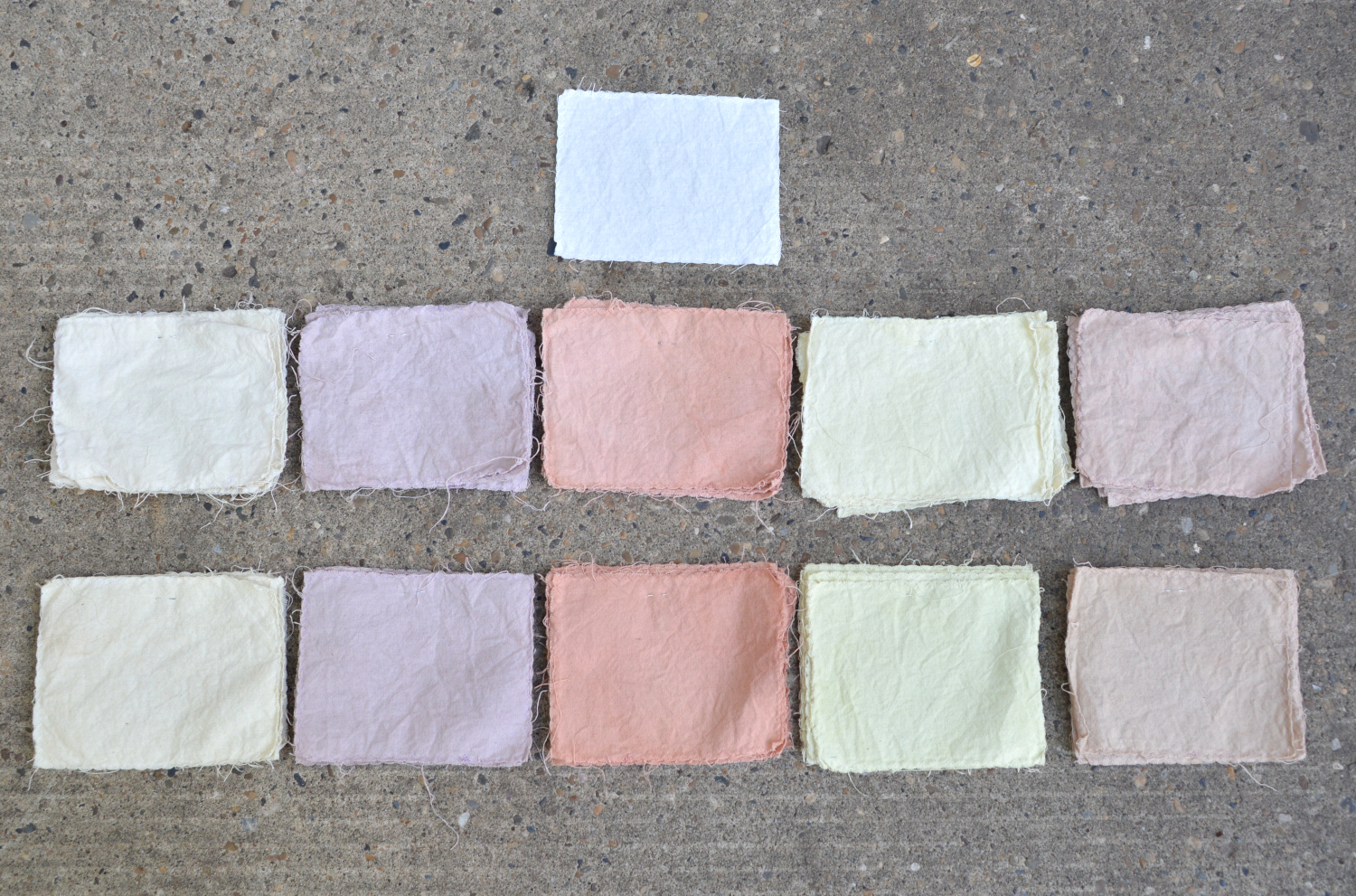
This is another one of those “I’ll write a whole separate post on this” sections, because this set of experiments has become quite involved. I am really excited to see how all these different tannins take different colours though – at the end I’ll have a quite thorough palette book I’ll be able to refer back to that will be extremely valuable for my natural dyeing knowledge.
